Rice is tiny edible seeds that grow on tall grass.
It’s kind of like the popcorn of the grass world, but instead of popping, it cooks up fluffy or sticky, depending on the kind.
It’s a super important food for many people around the world!
What is Rice
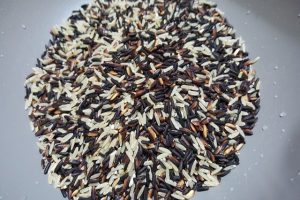 Rice is the seed of the grass species Oryza Sativa (Asian rice) and fit in to the grains family.
Rice is the seed of the grass species Oryza Sativa (Asian rice) and fit in to the grains family.
All natural forms of rice — white, brown, or wild are gluten-free.
Rice is a type of food that covers many different cultures.
It is used in lots of delicious food, from cereals to smallgoods to desserts.
For example:
- Breakfast cereals;
Whole rice for puffing and extrusion; broken rice, flour and bran for extrusion. - Meals and snacks;
Whole rice is incorporated into various meals and puffed rice snacks. Rice flours are used in puffed, blended and extruded snacks. - Pre-mixes;
Rice flours are used in small goods and seasoning as a binder, carrier and texturing agent. - Pet food;
Broken rice is added to pet foods for its nutritional benefits.
Rice is most well known for Chinese and Japanese dishes but Spanish rice is popular with the Mexican culture though.
There is also Cajun rice and sweet rice for those that want something for dessert.
Either way Rice fits into the category of a grain.
There are plenty of different ways to cook rice, it goes well with so many main dishes and is a common side dish in many homes.
Rice is an inexpensive ingredient too so it can help you to stretch the family budget for meals.
Types of Rice
Popular types of rice and their uses.
There are a variety of factors involved in choosing what types of rice will best suit what you need.
Take a look at these five common types of rice to determine which flavour profile, colour, length, and texture will work best for your dish.
-
Arborio Rice;

Arborio rice is a medium grain rice that is wider in size and has a characteristic white dot at the center of the grain.Due to the high starch content of Arborio rice, it has a slightly chewy and sticky consistency and develops a creamy texture when cooked.
Length: Medium grain.
Flavour Profile: Creamy.
Ideal For: Risotto, rice pudding, soup.
-
Basmati Rice
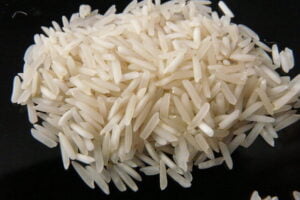 When cooked, basmati rice grains are long, dry, and separate.
When cooked, basmati rice grains are long, dry, and separate.
Basmati Rice gives pleasant, nutty aromatics and flavour in any dish.It is common in Indian and Asian cuisine, but it can be used in a number of recipes.
Serve it plain or with fresh herbs, green onions, coconut, or vegetables.
Length: Long grain.
Flavour Profile: Nutty.
Ideal For: Dal, curry, saffron rice.
-
Brown Rice
 Brown rice grains have a chewy texture when cooked.
Brown rice grains have a chewy texture when cooked.
Brown Rice imparts a pleasant, slightly nutty flavour to your dish.The nutritious bran layers are left on brown rice so it can retain its natural goodness and tan colour.
Rich in vitamins and minerals, brown rice is a 100% whole grain food.It is a versatile rice that becomes light and fluffy when cooked, ensuring it won’t stick together.
Length: Long grain.
Flavour Profile: Nutty.
Perfect For: Stuffed peppers, casseroles, stir-fry dishes, rice pilaf.
-
Jasmine Rice
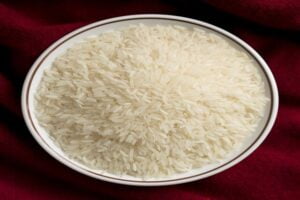 Jasmine rice will add an exotic flavour to any dish.
Jasmine rice will add an exotic flavour to any dish.
It develops a pleasant jasmine aroma while it is cooking.Use it when making a variety of traditional Asian dishes, including curries and stir-frys.
The moist, soft texture is ideal for soaking up spices and flavours.Length: Long grain.
Flavour Profile: Floral, jasmine flavour and aroma.
Best For: Curry, stir-fry dishes, and other Thai and Asian cuisine.
-
White Rice
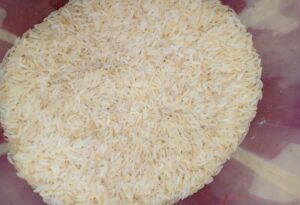 Due to the starch composition of white long grain rice, it has a slightly sticky consistency that’s useful in stuffing, casseroles, and stir-fry dishes.
Due to the starch composition of white long grain rice, it has a slightly sticky consistency that’s useful in stuffing, casseroles, and stir-fry dishes.
White Rice is arguably the most familiar and easily recognizable rice in traditional Australian, Kiwi and American recipes, and it’s also popular in Asian and Mexican cuisine.Compared to other varieties of rice, it has a mild flavour and light and fluffy texture when cooked.
Length: Long grain.
Flavour Profile: Mild.
Ideal For: Stuffing, casseroles, stir-fry dishes, rice pilaf.
How to Cook Rice 7 Ways
The process will really depend on how much rice you want as well as how you want to prepare it.
Let's show you seven different ways to cook rice.
The technique changes based on which type of rice you're making.
But have no fear, we've broken down everything below.
Ingredients
Boiled Rice Ingredients
- 1 cup 250 ml long grain white rice (such as Basmati)
- 2 Cups 500 ml water
Steamed Rice Ingredients
- 1 cup 250 ml long grain white rice (such as Basmati)
- 1¼ cups 312.5 ml water
- 1 cup milk
Ingredients For Cooking Rice Like Pasta
- Rice such as Basmati, brown rice and wild rice
- Water
Ingredients For Cooking Rice Pilaf Method
- 1 cup 250 ml long grain white rice (such as Basmati and Jasmine)
- 2 Cups 500 ml water
Ingredients For Cooking Rice In Rice Cooker
- 1 cup 250 ml long grain white rice (such as Basmati)
- 1 cup 250 ml water
Ingredients For Cooking Rice In Microwave
- 2 cups of rice
- 1 ½ cups 375 ml of water
Ingredients For Pressure Cooker Rice
- 1 cup 250 ml long grain white rice (such as Basmati)
- 1½ cups 375 ml Water (or vegetable liquid)
- 1 teaspoon olive oil or butter -optional
Instructions
- How to Boil Rice
When you think about making rice, this is the technique that probably comes to mind because it's the most classic.
Boiling rice works well with typical long-grain white rice. - Rinse the rice.
- Use the right ratio of water. Add 2 parts water and 1 part rice to a large pot.
For slightly firmer rice, use 1 part liquid to 2/3 parts rice. - Bring the water to a boil. Once it's boiling, add a big pinch of salt.
- Maintain a simmer. Reduce heat to low, cover the pot with a tight fitting lid, and maintain a gentle simmer.
- Cook without peeking or stirring. Cook until the water is absorbed, about 18 minutes.
Try not to peek until the end of the cooking time so the steam doesn't escape.
Whatever you do, don't mix the rice while it's cooking — this will lead to gummy rice. - Let the rice rest covered. Turn off the heat and let the rice sit, covered, for 10 minutes.
During this time, the rice will steam for extra fluffy results. - Fluff the rice with a fork.
- How To Steam Rice.
The best method of cooking rice is by steaming it.
When boiled in water, it loses a portion of its already small percentage of nitrogenous elements.
Steaming rice is great for typical long-grain white rice. - Rinse the rice.
- Soak a cup of rice in 1¼ cups of water for an hour, then add a cup of milk.
- Turn into a dish suitable for serving it from at table.
- Place in a steam-cooker or a covered steamer over a kettle of boiling water, and steam for an hour.
- It should be stirred with a fork occasionally, for the first ten or fifteen minutes.
- How To Cook Rice Like Pasta
Surprise, you can cook rice like pasta in an unmeasured amount of water.
Cooking rice like pasta is a great technique for varieties like brown rice and wild rice that take a long and sometimes unpredictable amount of time to cook.
It's also the best way to cook larger quantities of any sort of rice without a rice cooker.
It can be tricky to nail big batches of rice cooked using the classic method because there's so much more water that needs to be kept at a constant simmer.
Here's what to do instead. - Rinse the rice.
- Bring water to a boil, then add the rice. Fill the pot with water (no need to measure) and salt it — just like you do with pasta water.
Bring it to a boil and then carefully add your desired amount of rice. - Maintain a boil. Boil uncovered without stirring until the rice is softened through but still a tad al dente (read: not mushy).
- Drain the rice. Drain the rice through a fine mesh strainer.
- Cooking Rice The Pilaf Method
When you're cooking aromatic varieties of rice like Basmati and Jasmine, there are a few smart techniques you can use in this method to enhance their naturally nutty flavour. - Rinse the rice.
- Toast the rice to complement the nuttiness. We love toasting all sorts of rice, but when you toast aromatic rice, the results pay off exponentially.
Add 1 part rice to a pot with a dab of oil or butter and cook over medium until it looks toasted and smells nutty, 2 to 3 minutes. - Bring water to a boil before adding it to the rice.
Pouring already boiling water on top of the rice helps control the exact amount of water you're adding.
This is something that's important for basmati and jasmine rice because they're on the starchy side and can end up gummy. You're aiming to achieve separate grains. - Simmer the rice. Reduce the heat to low, cover and simmer until the liquid is absorbed, about 18 minutes.
- Let the rice rest covered. Turn off the heat and let the rice sit, covered, for 10 minutes to allow it to steam.
- Fluff with a fork.
- How To Cook Rice In A Rice Cooker
Rice cookers work swiftly by reducing air pressure above the liquid, encouraging it to boil faster. Brilliant. - Rinse the rice.
- Use a 1:1 water to rice ratio. This ratio applies to larger batches too.
While it can be used with smaller amounts, the water doesn't absorb at the same rate, which could affect your end result.
You'll have to play around a little with the cooker, using your manual's guidelines, to see what works best with different recipes and for your individual needs. - Let the rice cooker do all the work for you. Press the "on" button and the cooker will handle the cooking time.
- Let the rice rest covered. Let it rest, covered, for about 10 minutes for fluffy results.
- How To Cook Rice In The Microwave
Cooking rice in the microwave works for long, medium and short grain rice. It's fast and produces fluffy results. - Rinse the rice.
- Use a large microwave safe container. A large bowl square baking dish works perfectly. Keep in mind that the rice will expand as it cooks.
- The rice to water ratio is important for getting a fluffy texture, and there are two ways to determine it:
Measuring: For up to 2 cups of rice, use 1 ½ cups of water (375 ml) per cup of rice.
For more than 2 cups of rice, use 1¼ cups of water per cup of rice. - Microwave on high uncovered first.
Microwave until steam holes appear and a lot of the water has disappeared. If you're using 2 cups of rice, this will be for about 10 minutes. - Microwave covered on medium-low. Use heat-safe plastic wrap and cook until the liquid is completely absorbed (about 15 minutes for 2 cups of rice).
- Fluff and season before serving. Use a fork to fluff the grain, seasoning as you do this.
- How To Cook Rice In A Pressure Cooker
- Add the rice, water and oil to the pressure cooker.
- Close and lock the lid of the pressure cooker.
- For electric pressure cookers:
Cook for 3 minutes at high pressure.
When cooking time is up count 10 minutes of natural open time. Then, release the rest of the pressure using the valve.
For stove top pressure cookers:
Turn the heat up to high and when the cooker indicates it has reached high pressure, lower to the heat to maintain it and begin counting
3 minutes pressure cooking time.
When time is up, open the pressure cooker with the 10-minute Natural release method - move the cooker off the burner and do not remove the lid.
Instead, count 10 minutes for the contents to finish cooking and steaming using the cooker's residual heat. - Fluff with a fork and serve.
Video
Tips for Cooking Perfect Rice
- Always Rinse Rice Before Cooking
No matter how you’re cooking your rice (or which variety you’re making), it’s important to rinse those grains.
Doing so removes excess starch.
Left on the rice, the starch results in unappealing, gummy results.Some recipes will tell you to place the rice in a bowl and change the water several times, but we think the easiest technique is to rinse it in a fine mesh strainer.
Agitate the grains with your hands as you run water over them to shower them evenly. When the water runs clear, you’re done rinsing.Having trouble seeing whether or not it’s clear?
Put a clear bowl underneath the water draining off the rice, let any bubbles settle away and then take a look. - Consider Toasting the Rice
This step isn’t necessary. But if you have the time, it enhances the natural flavour of the rice.Simply heat a teaspoon of butter or olive oil over medium heat in the pot you’re going to cook the rice in.
Add the rice and stir it frequently until it starts smelling nutty — a bit like popcorn. If you’re toasting white rice, you’ll see it turn pale tan. - Don’t Forget to Season the Water
Adding a big pinch of salt to the cooking water goes a long way in making your finished rice taste balanced.
If you forget and season the rice after it’s done cooking, you’ll notice an unpleasant bite of salt. - Fluffing your Rice
Many rice recipes conclude with the simple instructions: “fluff rice”.
This just means you should stick a fork into the rice and break up any grains that have clumped together.
The step literally makes your finished dish fluffier.
Rice Nutrition
There are dozens of different types of rice grains that provide different textures, tastes and nutritional value.
It is considered a staple food for more than half of the world’s population – particularly Eastern and Southern Asia.
White rice is the most common type of rice consumed, however brown rice (wholegrain rice) is becoming increasingly popular due to the health benefits it provides.
Rice is primarily composed of carbohydrate and has virtually no fat with the specific levels varying depending on the type of grain.
-
White Rice
Coming in both short-grain and long-grain varieties, white rice is refined with milling and polishing therefore increasing the cooking quality and tastiness of the rice.
Short-grain rice contains more starch causing it to become soft and sticky when cooked whilst long grain rice, such as Jasmine and Basmati rice
These contain less starch meaning the grains don’t stick together due to them being drier. -
Brown Rice
Brown rice also comes in short-grain and long-grain varieties.
Brown rice is a wholegrain food and is particularly nutritious.It contains all the goodness of the wholegrain, including the bran (fibre rich outer layer) and germ (nutrient rich core) which contain many beneficial components like fibre, vitamins and minerals.
The difference between white rice and brown rice is the removal of the bran layer during the milling process.
Is rice gluten free
Plain rice, in its various forms (e.g. white & brown rice – short, medium and long grain) is gluten free.
Rice can be used in numerous ways to create gluten free savory meals, tasty snacks and scrumptious desserts.
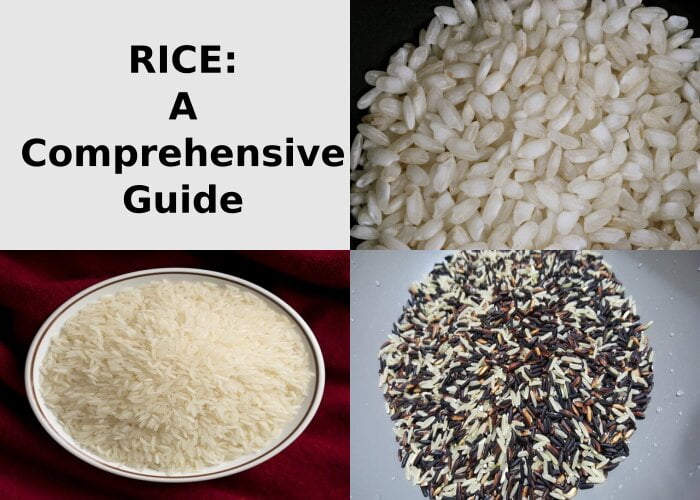

 See all our rice recipes here
See all our rice recipes here